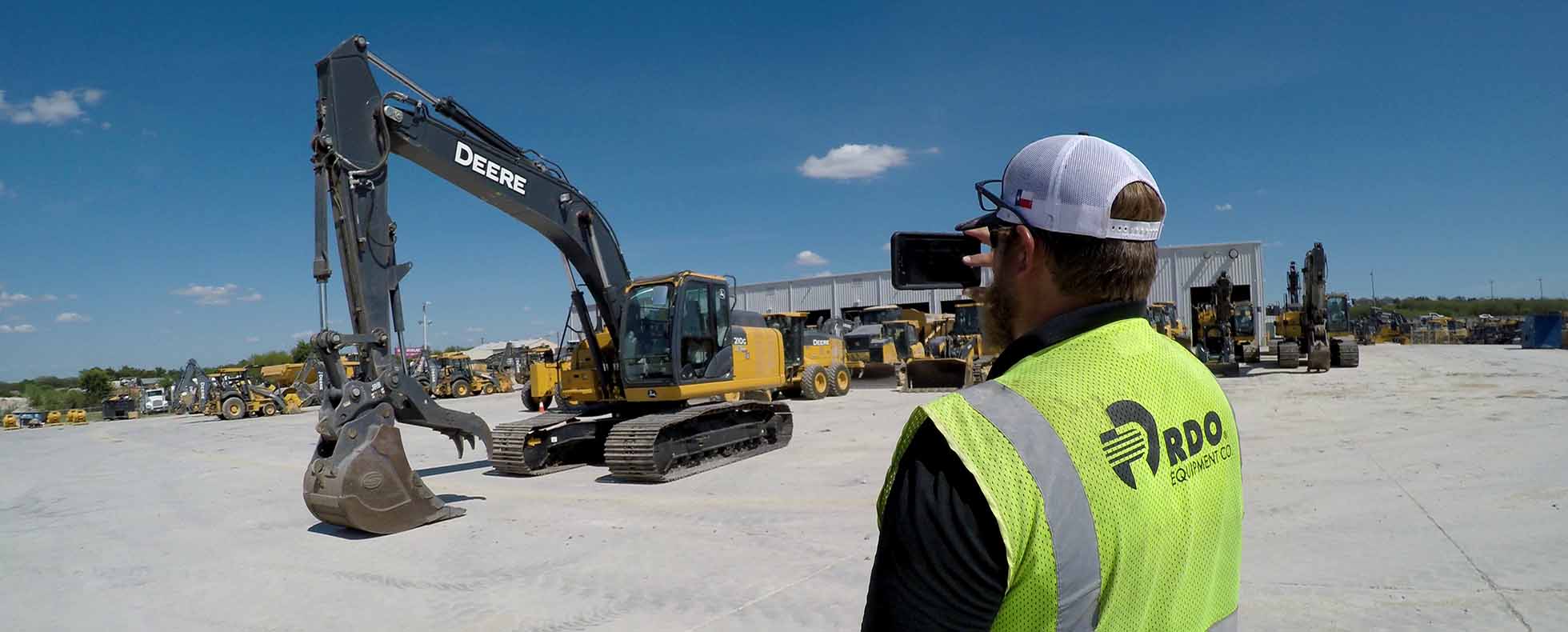
During my nearly 30-year career as a field technician working with operators and fleet managers on a job site, one machine component seems to adhere to “Murphy’s Law” — anything that can go wrong will go wrong — more frequently than others: undercarriages. One situation I often recall was when an excavator's tracks broke right before we expected three days of rain on residential development in Texas. We needed to find a way to repair the machine on the job site and remove it without sinking and disrupting the grade work they had just completed. We were able to perform a "miracle" that day by replacing a few key parts, but that’s not always the case.
Undercarriage maintenance can be almost half the cost of maintaining your machine, possibly totaling tens of thousands of dollars depending on the machine's age, model or extent of the required repair. To extend your equipment’s lifespan, follow RDO’s guidelines for undercarriage inspection.
The tracks and chains are essential for a dozer or excavator's overall mobility and performance. These components endure most of the stress of pushing or pulling. When dozers or excavators work at an angle or push on a slope, the chains' tension reaches a high level, requiring more engine power.
If a dozer or excavator's fuel consumption increases, the fleet manager should contact the operator and have them double-check the machine's undercarriage.
Even if the machine's operator is still learning the ropes and could miss a slight dip in performance, the fleet manager can schedule an undercarriage inspection with a trusted expert every 1,000 hours or at least once a year. Depending on the machine's age or a job site's environmental factors, such as if the soil is dense, sandy or wet, the undercarriage may need to be inspected more frequently.
Check chains to ensure they are still in good shape because once they're worn, stress cascades to more undercarriage components, causing parts to increase wear, so replacements might be required earlier than expected. Remember that when one link of the chain breaks, you'll have to replace several or even the whole chain to make the machine move again.
When rocks or dense soil get stuck between tracks or chains, they act like sandpaper, causing premature wear. During daily inspections, operators must remove these environmental materials that get stuck between the rollers, chain or frame.
Operators should often clean their machine's undercarriage on any job site. Clean the undercarriage's components daily, especially where the shoes or rollers rub against each other. Before a machine moves to another job site, operators should check and clean its undercarriage, as the soil may change from sandy to rockier and denser.
Operators will be the first to notice when their machine's undercarriage needs to be inspected. First, they need to understand the two main chain types to catch a worn chain before it breaks.
After operators understand the different chain types, they can work alongside their trusted equipment expert to learn the ropes. Here are the steps I teach operators:
When the operator understands how to inspect their machine’s undercarriage, they can calculate the average production hours within a week and estimate how many months before replacement parts, like rollers or chains, will be required.
Unplanned downtime is not cheap — most undercarriage total repair jobs start at $10,000 and go up — so I always encourage contractors to partner with a dealer who provides accurate info so they can start budgeting for the parts or discuss different machine models.
Contractors can choose an aftermarket service package at trusted equipment stores like RDO Equipment Co. that includes undercarriage inspections. Fleet managers understand their machine’s undercarriage components and quickly recommend what may need replacing.
At RDO, we value fleet managers’ expertise and discuss options so we can help ensure the longest life cycle for the undercarriage. Through these conversations, we can schedule preventative maintenance and undercarriage inspections based on job sites and knowledge of average production hours. Together, we minimize downtime and safeguard against unexpected delays so dozer or excavator operators can complete the job in less time.